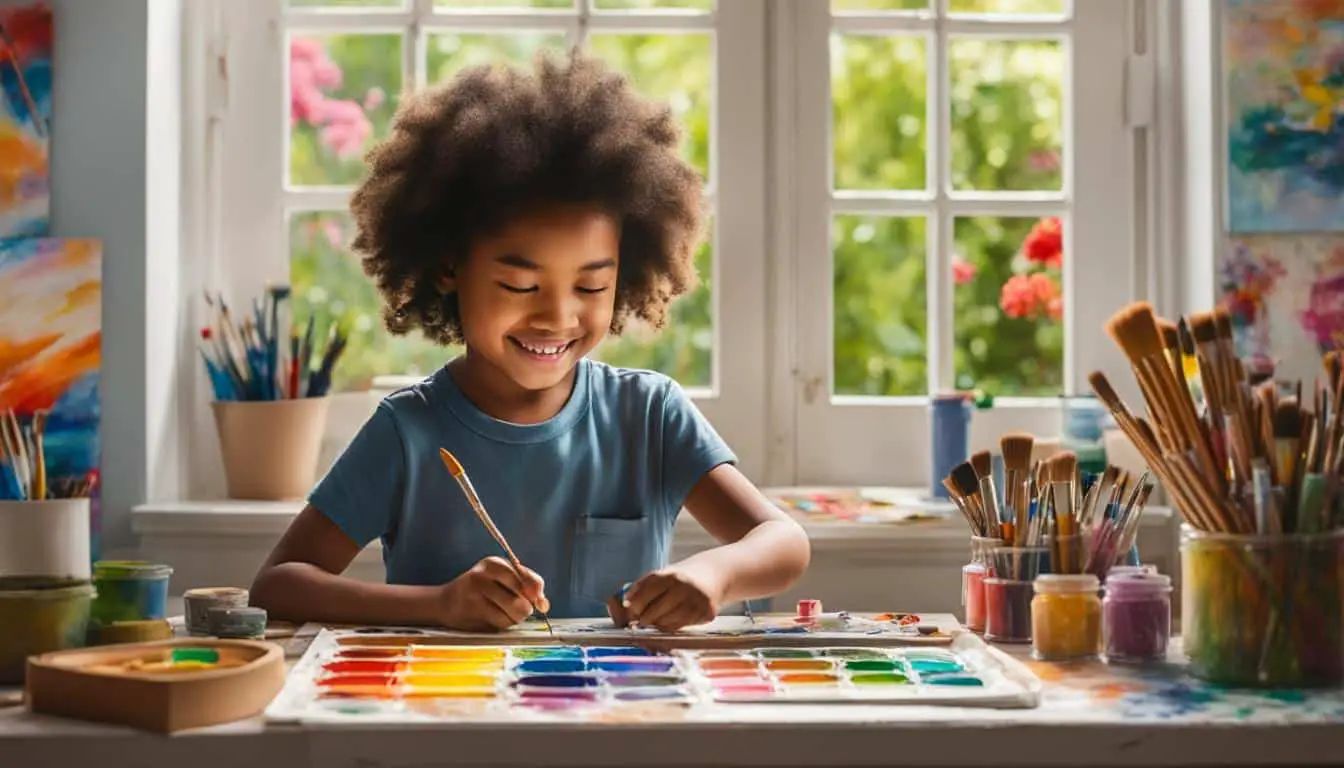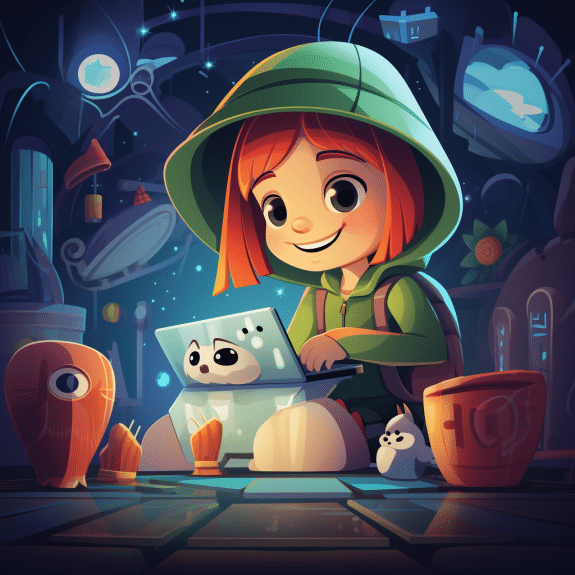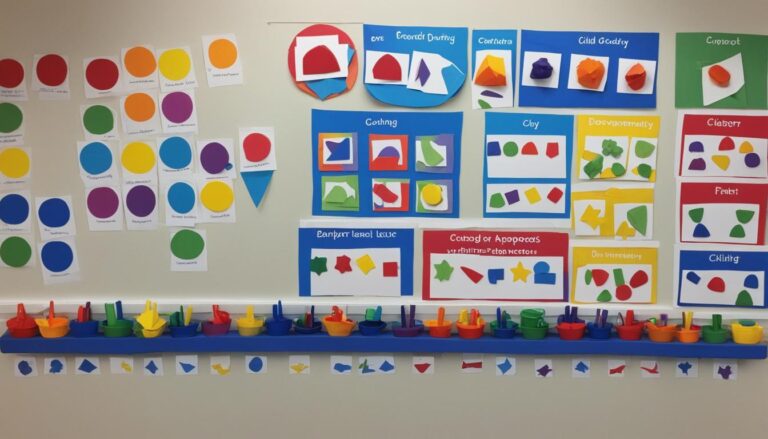Cultivating Creativity in Family Activities
As a parent, I believe that cultivating creativity in family activities is a wonderful way to spark imagination, foster innovation, and develop new skills in our children. Creative activities go beyond just amusement; they play a vital role in their overall development. Whether it’s painting, building, playing make-believe, or exploring science experiments, creative activities offer a range of benefits that contribute to their growth and well-being.
Engaging in various types of creative activities allows children to immerse themselves in different forms of artistic expression. Through art and crafts, they can explore their creativity and develop fine motor skills. Building things enhances problem-solving abilities and spatial perception. Make-believe games teach empathy and social skills. Music and dance promote self-expression and boost confidence. Storytelling nurtures imagination and language skills. Science experiments foster critical thinking and curiosity. Challenges encourage perseverance and resilience. Multimedia activities embrace technology and enhance digital literacy. Culinary experiments teach them about nutrition and encourage creativity in the kitchen. Field trips inspire them to explore the world around them. And lastly, free play lets them exercise their imagination and creativity without limitations.
By incorporating these activities into our family routines, we provide our children with the opportunity to develop new skills, express themselves, and explore their interests in a supportive and nurturing environment. It is through these creative endeavors that our children can truly shine and unleash their full potential.
Are you ready to embark on a journey of creativity with your family? Let’s discover the benefits of cultivating creativity in kids together!
Key Takeaways:
- Cultivating creativity in family activities sparks imagination and fosters innovation.
- Various types of creative activities develop new skills in children.
- Art and crafts, building things, make-believe games, music and dance, storytelling, science experiments, challenges, multimedia, culinary experiments, field trips, and free play are all valuable creative activities.
- Each type of creative activity offers unique benefits for a child’s development.
- Engaging in creative activities allows children to express themselves and explore their interests.
Benefits of Cultivating Creativity in Kids
When it comes to nurturing children’s development, cultivating creativity plays a vital role. Engaging kids in creative activities offers a plethora of benefits that go far beyond mere entertainment. From problem-solving skills to enhanced social empathy, creativity has a profound impact on a child’s overall growth and well-being.
Develop Problem-Solving Skills
By encouraging children to explore their creative side, they develop essential problem-solving skills. Through observation, resourcefulness, and trying out new ideas, kids learn to think critically and find innovative solutions to challenges they encounter.
Enhance Motor Skills
Creative activities such as painting, building, and playing musical instruments promote fine motor skills, hand-eye coordination, and spatial awareness. These skills are crucial for children’s physical and cognitive development.
Boost Sensory Perception
Participating in creative activities stimulates the senses and enhances sensory perception in children. By engaging with different textures, colors, sounds, and smells, kids become more observant and curious about the world around them.
Support New Ways of Thinking
Cultivating creativity encourages children to think outside the box and explore new perspectives. It helps them break free from conventional thinking patterns and embrace innovative approaches to problem-solving.
Encourage Freedom of Expression
Creative activities provide children with a safe space to express themselves freely. Whether through art, music, or storytelling, kids can unleash their imagination and communicate their thoughts and emotions without limitations.
Improve Social Empathy
Participating in collaborative creative activities fosters social empathy in children. It teaches them to appreciate and respect different viewpoints, encourages cooperation, and enhances their ability to understand and empathize with others.
Introduce Other Subject Matters
Creativity serves as a gateway to various subject matters. Through engaging in artistic endeavors or scientific experiments, children are exposed to new ideas, concepts, and disciplines, broadening their knowledge and understanding of the world.
Enhance Self-Esteem
When children engage in creative activities, they gain a sense of accomplishment and pride in their creations. This boosts their self-esteem and confidence, nurturing a positive self-image that extends beyond the creative realm.
Reduce Stress
Creative activities provide a therapeutic outlet for children to relieve stress and unwind. Painting, crafting, or engaging in imaginative play can be a calming and meditative experience, promoting emotional well-being and resilience.
Maximize Cooperation
Collaborative creative activities encourage children to work together, share ideas, and cooperate toward a common goal. These experiences foster teamwork, effective communication, and empathy, ultimately promoting a sense of unity and cooperation among children.
Cultivating creativity in kids encompasses a wide range of benefits, from the development of problem-solving skills and enhanced motor skills to boosted sensory perception and support for new ways of thinking. It also encourages freedom of expression, improves social empathy, introduces other subject matters, enhances self-esteem, reduces stress, and maximizes cooperation among children.
By nurturing creativity in children, we empower them with the tools they need to navigate the world, express themselves, and embrace their unique abilities. The benefits of cultivating creativity are far-reaching, providing lifelong skills and a foundation for personal and academic success.
“Nurturing creativity in children unlocks their unlimited potential for growth, learning, and self-expression.” – Jane Smith, Child Development Expert
Top Activities for Cultivating Creativity in Kids
If you’re ready to encourage creativity in your kids, here are some activity ideas to get started:
- Draw a Chalk Obstacle Course: Let your children’s imagination run wild as they create a fun and challenging course using colorful chalk on the pavement. This activity combines creativity with movement, allowing kids to design their own unique obstacles.
- Build a Chain Reaction Machine: This activity involves constructing a machine that sets off a chain reaction. Children can use various household items and their creativity to build an intricate contraption that showcases cause and effect.
- Put on a Talent Show: Encourage your children to showcase their talents by organizing a family talent show. This activity allows kids to explore their interests, express themselves creatively, and build confidence by performing in front of an audience.
- Make a Rainbow Water Xylophone: Combine science and music by creating a colorful water xylophone. Kids can experiment with different water levels to produce various tones, fostering their curiosity and creativity.
- Write and Illustrate a Comic Book: Spark your children’s storytelling abilities by encouraging them to write and illustrate their own comic book. This activity promotes creativity, literacy, and visual art skills.
- Send a Baking Soda Rocket Flying: Engage in a thrilling science experiment by constructing a simple baking soda rocket. This hands-on activity introduces kids to the principles of chemistry and physics in an exciting and interactive way.
- Build and Decorate a Wind Chime: Foster your children’s artistic expression by building a wind chime together. Allow them to choose materials and colors, encouraging their creativity and providing a relaxing sensory experience.
- Take a Nature Photo Walk: Explore the outdoors with your kids and capture the beauty of nature through photography. This activity encourages observation, mindfulness, and an appreciation for the natural world.
- Make Solar Oven S’mores: Combine science and culinary arts by building a solar oven to make delicious s’mores. This activity teaches kids about renewable energy and allows them to enjoy tasty treats they’ve prepared themselves.
- Go to a Children’s Museum: Visit a children’s museum to provide your kids with a stimulating and interactive learning experience. These museums often offer hands-on exhibits and activities that promote creativity, critical thinking, and exploration.
These activities provide children with opportunities to express their creativity and explore their interests in various ways. Whether it’s through art, science, music, or storytelling, cultivating creativity in kids is a wonderful way to enrich their lives and support their overall development.
Nurturing Creativity in Children: Tips from an MIT Researcher
Nurturing creativity in children is essential for fostering their creative capacities and supporting their overall development. As an MIT researcher, I have studied the ways in which parents and caregivers can create a fertile environment that cultivates creativity in children. Balancing structure and freedom is key in providing the necessary framework while allowing for creative exploration.
One tip I recommend is encouraging children to mess around with materials. By providing them with a wide variety of materials, you embrace all types of making and expression. This helps generate ideas and sparks creativity as children explore and experiment with different mediums and techniques.
It’s important to emphasize the process of creating rather than solely focusing on the final product. By doing so, you encourage children to enjoy the journey of creation, freeing them from the pressure of achieving a specific outcome. This allows for more exploration, risk-taking, and innovation.
Extending time for projects is another effective way to nurture creativity. Allowing children to fully engage in a project without rushing or strict time limitations provides them with the opportunity to delve deeper into their ideas and refine their work. This extended time allows for a more immersive and meaningful creative experience.
As a parent or caregiver, you can play the role of a matchmaker by helping children find others to collaborate with. Collaboration fosters meaningful partnerships and exposes children to different perspectives and ideas. By getting involved as a collaborator yourself, you demonstrate the value of collaboration and become a valuable resource for children to bounce ideas off of and build upon.
Asking authentic questions is a powerful tool for nurturing creativity. By asking open-ended questions that encourage reflection and self-expression, you challenge children to think critically, explore their ideas further, and communicate their thoughts effectively.
Finally, it is important to share your own reflections and experiences. By modeling creative thinking and sharing your own processes and insights, you inspire children and provide them with a reference point for their own creative endeavors.
Remember, nurturing creativity in children is a continuous process. By implementing these tips and creating a supportive environment, you can foster their creative capacities and help them develop valuable skills that will benefit them throughout their lives.
Examples of Questions for Nurturing Creativity:
- What do you think would happen if you tried this differently?
- How would you create something new using these materials?
- What inspired you to come up with this idea?
- How could you make this even more interesting or unique?
| Benefits of Nurturing Creativity in Children | Tips for Nurturing Creativity |
|---|---|
| 1. Develops problem-solving skills | 1. Encourage messing around with materials |
| 2. Enhances critical thinking | 2. Emphasize the process of creating |
| 3. Fosters innovation | 3. Extend time for projects |
| 4. Boosts self-esteem | 4. Play the role of matchmaker |
| 5. Stimulates imagination | 5. Get involved as a collaborator |
Conclusion
Cultivating creativity in family activities is crucial for sparking imagination, fostering innovation, and developing new skills in children. By engaging in activities that cultivate creativity, children have the opportunity to express themselves, explore their interests, and develop vital skills for their overall development.
These creative activities offer numerous benefits, including the enhancement of problem-solving skills, improved motor skills, and heightened sensory perception. They also support the development of new ways of thinking, allowing children to approach challenges with fresh perspectives. Through creative expression, children can explore their freedom of expression, building confidence and self-esteem.
Nurturing creativity in children through family activities also fosters social empathy as they engage in collaborative projects and learn to appreciate different perspectives. Additionally, these activities introduce children to various subject matters, expanding their knowledge and curiosity. Finally, participating in creative activities reduces stress and maximizes cooperation, providing a positive and enjoyable experience for the entire family.
FAQ
What are the benefits of cultivating creativity in kids?
Cultivating creativity in kids offers numerous benefits, including the development of problem-solving skills, enhanced motor skills, boosted sensory perception, support for new ways of thinking, encouragement of freedom of expression, improved social empathy, introduction to other subject matters, enhanced self-esteem, reduced stress, and maximized cooperation.
What are some top activities for cultivating creativity in kids?
Some top activities for cultivating creativity in kids include drawing a chalk obstacle course, building a chain reaction machine, putting on a talent show, making a rainbow water xylophone, writing and illustrating a comic book, sending a baking soda rocket flying, building and decorating a wind chime, taking a nature photo walk, making solar oven s’mores, and going to a children’s museum.
How can I nurture creativity in children?
To nurture creativity in children, create a fertile environment by balancing structure and freedom, encourage children to mess around with materials to generate ideas, provide a wide variety of materials for diverse forms of making and expression, emphasize the process of creating rather than solely focusing on the final product, extend time for projects, act as a matchmaker to help children find others to collaborate with, get involved as a collaborator, ask authentic questions to encourage self-expression and reflection, and share your own reflections to model creative thinking for children.






